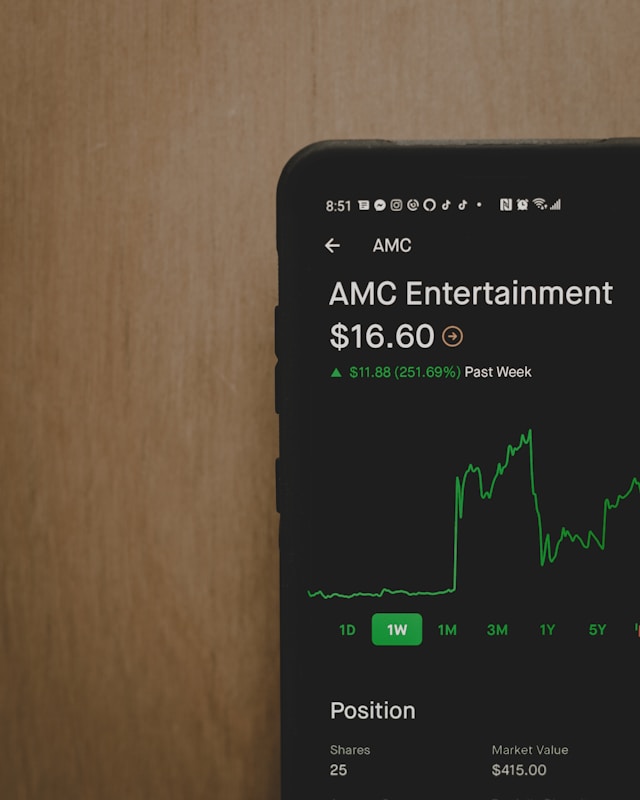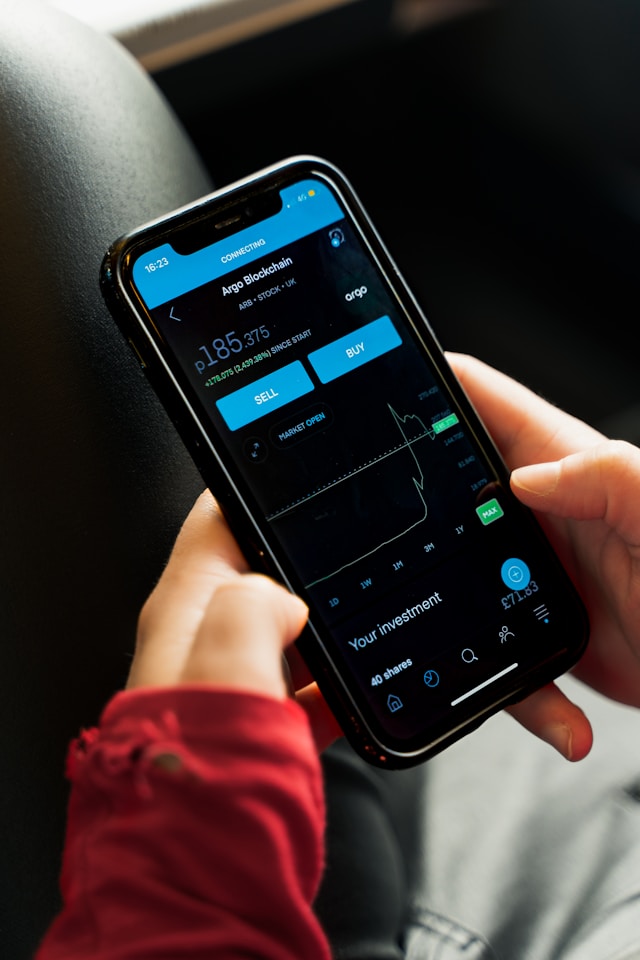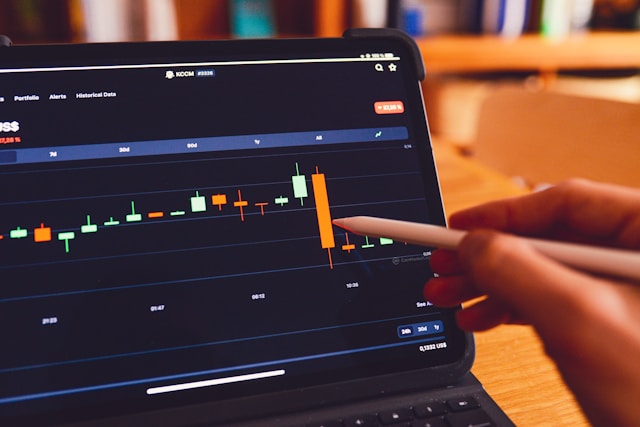Automated Trading vs. Manual Trading: An In-Depth Comparison

Introduction
The financial market has seen tremendous growth and evolution over the past few decades. With the advent of technology, trading has become more accessible and sophisticated, attracting a diverse range of participants. Among the various trading methods, automated trading and manual trading stand out as two primary approaches adopted by traders worldwide.
Automated trading, also known as algorithmic trading, utilizes computer programs to execute trades based on predefined criteria. This method leverages advanced technologies such as artificial intelligence (AI), machine learning, and complex algorithms to make trading decisions with minimal human intervention.
On the other hand, manual trading relies on human intuition, experience, and real-time decision-making. Traders manually analyze market conditions, develop strategies, and execute trades without the aid of automated systems.
This article aims to provide an in-depth comparison between automated trading and manual trading. By exploring the key differences, benefits, and drawbacks of each method, we hope to equip traders with the knowledge necessary to make informed decisions that align with their trading goals and resources.
Understanding Automated Trading

Definition and Explanation of Automated Trading
Automated trading, also known as algorithmic trading or algo trading, involves using computer programs to execute trading orders based on predefined criteria. These criteria can include various market conditions such as price, volume, and time. The goal of automated trading is to execute trades at the best possible prices with high speed and accuracy, minimizing human intervention.
How Automated Trading Works: Algorithms, Bots, and AI
Automated trading systems operate through algorithms, which are sets of rules designed to perform specific tasks. These algorithms analyze market data and execute trades based on the instructions programmed into them. Some common components of automated trading systems include:
- Trading Algorithms: The core of automated trading, these algorithms define the rules for buying and selling assets.
- Trading Bots: Software programs that use algorithms to automatically execute trades. Bots can operate 24/7, taking advantage of market opportunities at any time.
- Artificial Intelligence and Machine Learning: Advanced AI and machine learning technologies can enhance trading algorithms by analyzing vast amounts of data and learning from past market behaviors to improve trading decisions.
Common Platforms and Tools Used in Automated Trading
Several platforms and tools are available to facilitate automated trading. Some popular ones include:
- MetaTrader (MT4/MT5): Widely used trading platforms that support algorithmic trading through expert advisors (EAs).
- NinjaTrader: A platform that offers extensive tools for building and testing automated trading strategies.
- TradeStation: Known for its robust trading software and automated trading capabilities.
- QuantConnect: An open-source platform for designing and deploying algorithmic trading strategies.
Key Benefits of Automated Trading
Automated trading offers several advantages over manual trading, including:
- Speed and Efficiency: Automated systems can execute trades within milliseconds, faster than any human trader.
- Emotionless Trading: Eliminates emotional biases and psychological influences, leading to more disciplined trading.
- Backtesting Capabilities: Traders can test their strategies on historical data to evaluate their effectiveness before deploying them in live markets.
Key Drawbacks of Automated Trading
Despite its benefits, automated trading has some drawbacks:
- Technical Issues: Software glitches, connectivity problems, and other technical issues can disrupt trading.
- Over-Optimization: Excessive fine-tuning of algorithms based on historical data can lead to poor performance in live markets.
- Lack of Human Intuition: Automated systems cannot adapt to unexpected market conditions or news events as effectively as human traders.
Understanding Manual Trading

Definition and Explanation of Manual Trading
Manual trading involves human traders making decisions and executing trades based on their analysis of the market. Unlike automated trading, which relies on algorithms and software, manual trading requires the trader to interpret market data, develop strategies, and place trades without automated assistance.
How Manual Trading Works: Human Decision-Making Process
Manual trading relies heavily on the trader's knowledge, experience, and intuition. The process generally includes:
- Market Analysis: Traders use technical analysis, fundamental analysis, or a combination of both to understand market trends and conditions.
- Strategy Development: Based on their analysis, traders develop strategies that outline when and how they will enter and exit trades.
- Trade Execution: Traders monitor the market and execute trades in real-time, making adjustments as necessary based on market movements.
Key Benefits of Manual Trading
Manual trading offers several advantages that stem from human involvement:
- Human Intuition and Experience: Traders can use their intuition and experience to make decisions that algorithms might not be able to.
- Flexibility and Adaptability: Human traders can quickly adapt to unexpected market conditions or news events, adjusting their strategies on the fly.
- Real-Time Decision Making: Traders can make decisions in real-time, reacting to market changes as they happen.
Key Drawbacks of Manual Trading
Despite its advantages, manual trading has several drawbacks:
- Emotional Influence: Human emotions, such as fear and greed, can negatively impact trading decisions.
- Time-Consuming: Manual trading requires constant monitoring of the markets, which can be time-consuming and exhausting.
- Limited by Human Capacity: Human traders can only process a limited amount of information at a time, which may result in missed opportunities.
Comparative Analysis

Efficiency and Speed
Automated Trading: Automated trading systems are designed to execute trades within milliseconds, offering unparalleled speed and efficiency. These systems can process large volumes of data and execute multiple trades simultaneously, which is impossible for human traders to achieve.
Manual Trading: Manual trading, while potentially accurate, cannot match the speed of automated systems. Human traders need time to analyze data and execute trades, which can result in missed opportunities in fast-moving markets.
Accuracy and Consistency
Automated Trading: Automated trading systems follow predefined rules and criteria, ensuring consistent execution of trades. This consistency reduces the likelihood of errors that can occur due to human oversight.
Manual Trading: Manual trading relies on the trader's judgment and experience, which can vary over time. Human errors, such as miscalculations or incorrect data interpretation, can impact trading accuracy.
Emotional Influence
Automated Trading: One of the primary advantages of automated trading is the elimination of emotional biases. Automated systems execute trades based solely on logic and predefined criteria, without the influence of emotions like fear and greed.
Manual Trading: Human traders are susceptible to emotional influences, which can lead to impulsive decisions and inconsistent trading behavior. Emotions can significantly impact the effectiveness of a trading strategy.
Flexibility and Adaptability
Automated Trading: While highly efficient, automated systems may struggle to adapt to unexpected market conditions or news events that were not anticipated by their algorithms. This lack of adaptability can be a significant drawback in volatile markets.
Manual Trading: Human traders can quickly adapt to changing market conditions and unexpected events. Their ability to interpret new information and adjust strategies in real-time provides a level of flexibility that automated systems cannot match.
Cost and Resources
Automated Trading: Setting up and maintaining automated trading systems can be costly. It requires investment in technology, software, and ongoing maintenance to ensure optimal performance. However, once established, these systems can operate with minimal oversight.
Manual Trading: Manual trading does not require significant upfront investments in technology. However, it demands a considerable amount of time and effort from the trader, who must continuously monitor the markets and make decisions.
Summary Table
| Criteria | Automated Trading | Manual Trading |
|---|---|---|
| Efficiency and Speed | Executes trades in milliseconds | Slower due to human processing time |
| Accuracy and Consistency | Consistent execution based on algorithms | Variable accuracy, prone to human error |
| Emotional Influence | Emotionless, based on logic | Subject to emotional biases |
| Flexibility and Adaptability | Less adaptable to unexpected events | Highly adaptable and flexible |
| Cost and Resources | High initial cost, low ongoing oversight | Low initial cost, high ongoing effort |
Case Studies and Real-Life Examples

Successful Automated Trading Stories
Case Study 1: Renaissance Technologies
Renaissance Technologies, founded by Jim Simons, is one of the most successful quantitative hedge funds globally. Its flagship Medallion Fund uses complex algorithms and data analysis to execute trades. Despite charging high fees, the fund has consistently delivered exceptional returns, largely due to its sophisticated automated trading strategies.
Key Takeaways:
- Importance of advanced algorithms and data analysis.
- Significant investment in technology and talent.
- Consistent outperformance of traditional manual trading strategies.
Case Study 2: High-Frequency Trading Firms
High-frequency trading (HFT) firms like Virtu Financial use automated trading systems to execute thousands of trades per second. These firms capitalize on small price discrepancies across markets, making profits from high trade volumes. Their success demonstrates the speed and efficiency of automated trading in capturing market opportunities.
Key Takeaways:
- Speed and efficiency of automated systems.
- Ability to capitalize on minimal price differences.
- Reliance on technology and infrastructure.
Successful Manual Trading Stories
Case Study 1: Warren Buffett
Warren Buffett, one of the most successful investors of all time, primarily uses a manual trading approach. His strategy focuses on fundamental analysis, value investing, and long-term holding. Buffett's success underscores the effectiveness of human intuition, experience, and rigorous analysis in trading.
Key Takeaways:
- Importance of fundamental analysis and value investing.
- Long-term investment perspective.
- Human intuition and experience.
Case Study 2: George Soros
George Soros is another legendary investor known for his manual trading prowess. His most famous trade was shorting the British pound in 1992, earning him over $1 billion. Soros's strategy involved macroeconomic analysis and understanding global financial trends, highlighting the adaptability and intuition of successful manual traders.
Key Takeaways:
- Importance of macroeconomic analysis.
- Ability to identify and exploit large-scale market trends.
- Significant role of human intuition and decision-making.
Lessons Learned from Both Methods
Automated Trading:
- Investment in technology and talent is crucial.
- Consistency and speed offer significant advantages.
- Regular updates and maintenance of algorithms are necessary to adapt to changing market conditions.
Manual Trading:
- Human intuition and experience can lead to significant successes.
- Flexibility and adaptability are key in volatile markets.
- Thorough analysis and understanding of market fundamentals are essential.
Future of Trading: Trends and Predictions

Emerging Trends in Automated Trading
1. Increased Use of AI and Machine Learning
The integration of artificial intelligence (AI) and machine learning in automated trading is expected to grow significantly. These technologies can analyze vast amounts of data, identify patterns, and make predictions with high accuracy, enhancing the effectiveness of automated trading strategies.
2. Quantum Computing
Quantum computing has the potential to revolutionize automated trading. With its ability to process complex calculations at unprecedented speeds, quantum computing could significantly enhance algorithmic trading, enabling traders to analyze more data and execute trades faster than ever before.
3. Blockchain and Decentralized Finance (DeFi)
Blockchain technology and DeFi are likely to influence automated trading by providing more transparent, secure, and efficient trading environments. Smart contracts can automate various trading processes, reducing the need for intermediaries and lowering transaction costs.
Potential Advancements in Manual Trading
1. Enhanced Analytical Tools
Manual traders will benefit from advancements in analytical tools and platforms that provide more sophisticated data analysis, charting, and forecasting capabilities. These tools will help traders make better-informed decisions.
2. Integration of AI Assistance
While manual trading relies on human decision-making, AI-powered assistants can support traders by providing real-time market insights, risk assessments, and strategy recommendations. This hybrid approach can combine the strengths of both manual and automated trading.
3. Virtual and Augmented Reality (VR/AR)
VR and AR technologies could offer immersive trading experiences, allowing traders to visualize and interact with market data in entirely new ways. These technologies can enhance situational awareness and decision-making.
The Future Landscape of Trading: Hybrid Approaches
The future of trading is likely to see a blend of automated and manual trading approaches. Hybrid systems that leverage the speed and efficiency of algorithms with the intuition and adaptability of human traders are expected to become more prevalent.
1. Human-in-the-Loop Systems
In human-in-the-loop systems, traders oversee and manage automated trading algorithms, intervening when necessary. This approach allows for the benefits of automation while retaining human judgment and oversight.
2. Collaborative AI
Collaborative AI systems involve AI working alongside human traders, providing recommendations and insights while the final decision-making rests with the trader. This collaboration can enhance trading performance by combining human intuition with machine precision.
3. Ethical and Responsible Trading
As technology advances, there will be a growing emphasis on ethical and responsible trading practices. Ensuring transparency, fairness, and accountability in automated trading systems will be crucial to maintaining market integrity.
Summary
The future of trading will be shaped by technological advancements and the integration of automated and manual trading methods. Traders who embrace these changes and leverage the strengths of both approaches will be well-positioned to succeed in an increasingly complex and dynamic market environment.
Conclusion

Recap of Key Points
In this article, we explored the fundamental differences, benefits, and drawbacks of automated and manual trading. Here’s a brief recap of the key points:
- Automated Trading: Utilizes algorithms, bots, and AI to execute trades with high speed and efficiency. It eliminates emotional biases and allows for backtesting but can face technical issues and lacks human intuition.
- Manual Trading: Relies on human intuition, experience, and real-time decision-making. It offers flexibility and adaptability but is time-consuming and can be influenced by emotions.
We also examined real-life case studies demonstrating the successes of both trading methods and discussed emerging trends and predictions for the future of trading, highlighting the potential for hybrid approaches that combine the best of both worlds.
Final Thoughts on Choosing Between Automated and Manual Trading
Choosing between automated and manual trading depends on various factors, including a trader’s goals, resources, and risk tolerance. Automated trading is ideal for those who prioritize speed, efficiency, and emotionless trading. It suits traders who have access to advanced technology and are comfortable with programming and algorithmic strategies.
On the other hand, manual trading is suitable for traders who value human intuition, adaptability, and the ability to react to unforeseen market events. It requires a deep understanding of the market, continuous monitoring, and the ability to manage emotions effectively.
Encouragement to Assess Individual Trading Goals and Resources
Traders should assess their individual goals, resources, and trading styles to determine which method aligns best with their needs. For some, a hybrid approach that leverages both automated systems and manual oversight may offer the optimal balance of efficiency and adaptability.
Regardless of the chosen method, ongoing education and adaptation to market changes are crucial for long-term success in trading. By staying informed and continuously refining their strategies, traders can navigate the complexities of the financial markets more effectively.